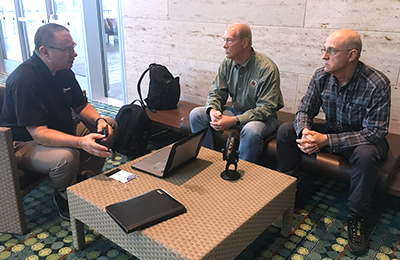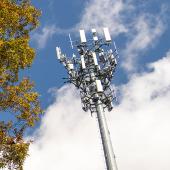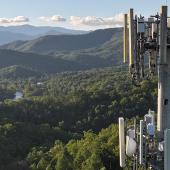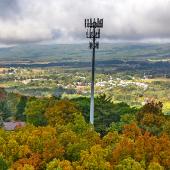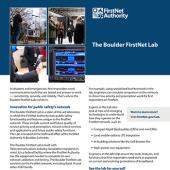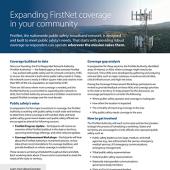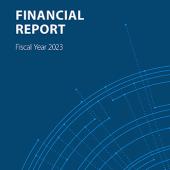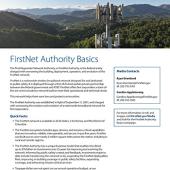FirstNet is making its mark across the country and as I meet with emergency medical services professionals, I’m pleased to hear their feedback on the initial benefits of having their own dedicated network. With more than 5,250 public safety agencies currently subscribed to FirstNet, we are learning more each day from first responders about how the network is enhancing emergency communications.
As guest host of the FirstNet Authority’s Public Safety First podcast, I had the pleasure of talking with Dr. Paul Zeeb, Medical Director for the Metropolitan Emergency Communications Consortium in Central Ohio, and Plain Township (OH) Assistant Fire Chief Jack Rupp. Both underscored that during emergency response, the ability to share data quickly during critical and routine incidents is imperative to ensuring patients receive the best quality care available.
“When we talk about those time-critical events like STEMI, sepsis, or some trauma, or even stroke, where what EMS providers do in the field is important and must be communicated to the receiving facilities,” explains Zeeb. “The ability to transmit that data is very important.”
With quick and reliable access for EMTs and paramedics to not only send but receive data, patients can be afforded an opportunity to receive rapid and specialized advanced care in potentially life threatening situations. “I think we have to be able to communicate bi-directionally and data is key to part of that,” continued Zeeb. “[EMS personnel] need to have some idea of what a patient’s past history has been, what interventions have been performed, which facilities are providing care. Often patients are not aware of what their drugs are, medications are, and it may make a difference for what we do in the field.”
The Plain Township Fire Department, which switched to FirstNet in 2018, is using FirstNet’s dedicated connection to help with collection and reporting of data. “As our data transport network, our mobile data computers are hooked to [FirstNet], our reporting computers are hooked to [FirstNet], and it’s the backbone right now for the exchange of that information,” said Rupp. “[FirstNet] allows us to pull information up from our record management system to the field, so I think those are things that streamline our event and give us more information in the field.”
The Plain Township Fire Department first learned about FirstNet after one of their own firefighters inquired about the network and learned about the network’s “always on” connection with priority and preemption for first responders. Shortly thereafter, the Department decided it was time to try out FirstNet for themselves.
“[FirstNet] provided us a card that we put in to our routers and we ran it for about two months, and during that time period, he looked at the data service and found no interruptions,” recalls Rupp. “Based upon the savings and the persistence of the cards, and our network communications, we made the decision to change our vehicles over to FirstNet, and it’s been a positive decision because it’s saved us money and it’s been reliable.”
To hear more from Assistance Fire Chief Rupp and Dr. Zeeb, listen to Episode 14 of the Public Safety First Podcast - The Future of Dedicated Public Safety Broadband and Emerging Tech in EMS.
For the latest episodes of the Public Safety First Podcast, subscribe via SoundCloud or iTunes.


